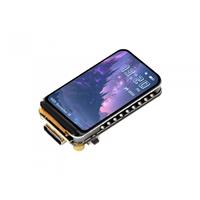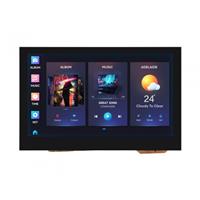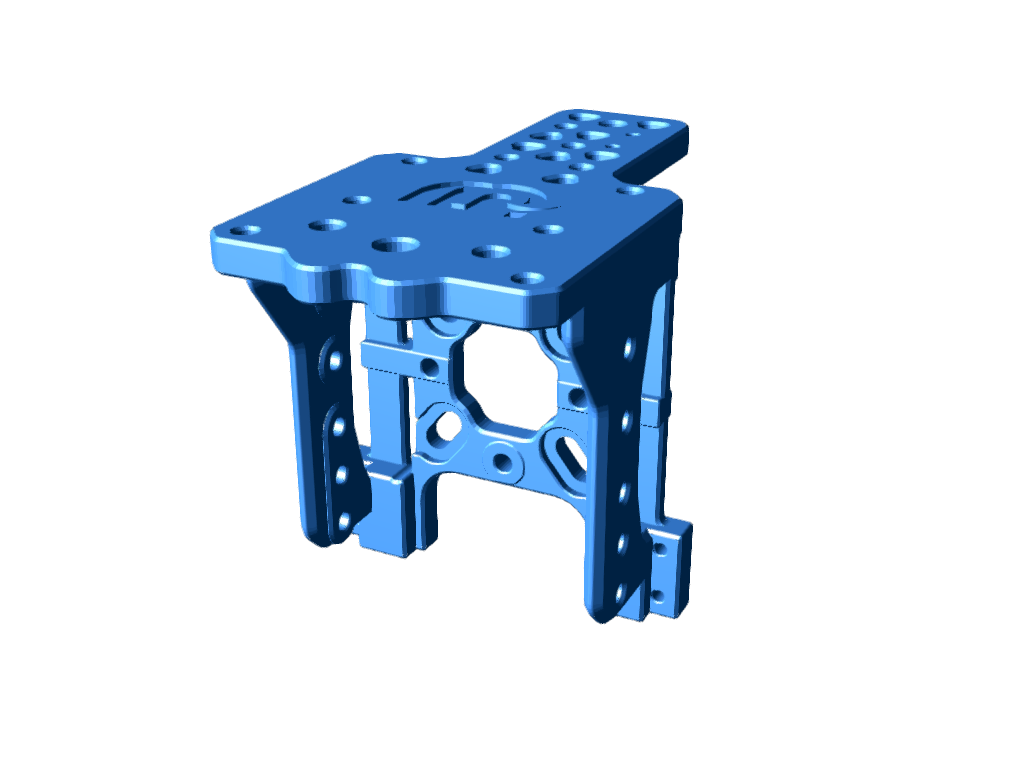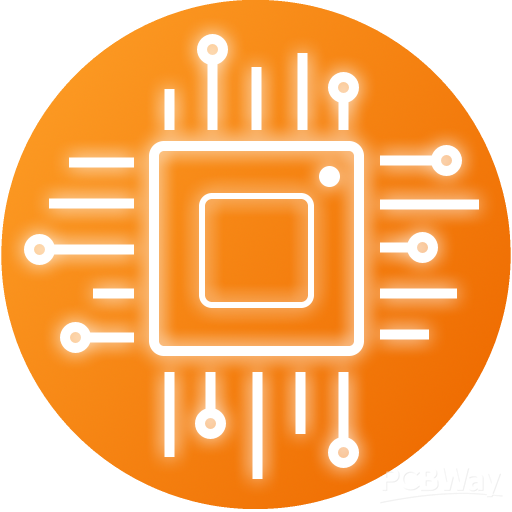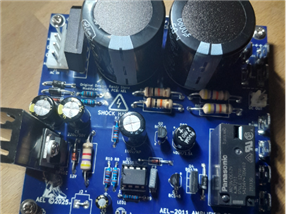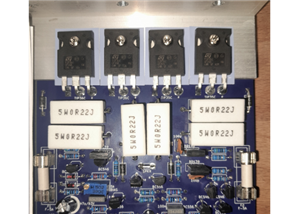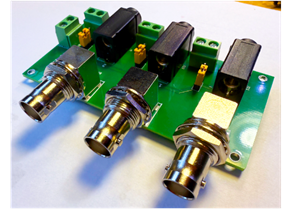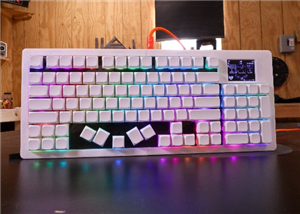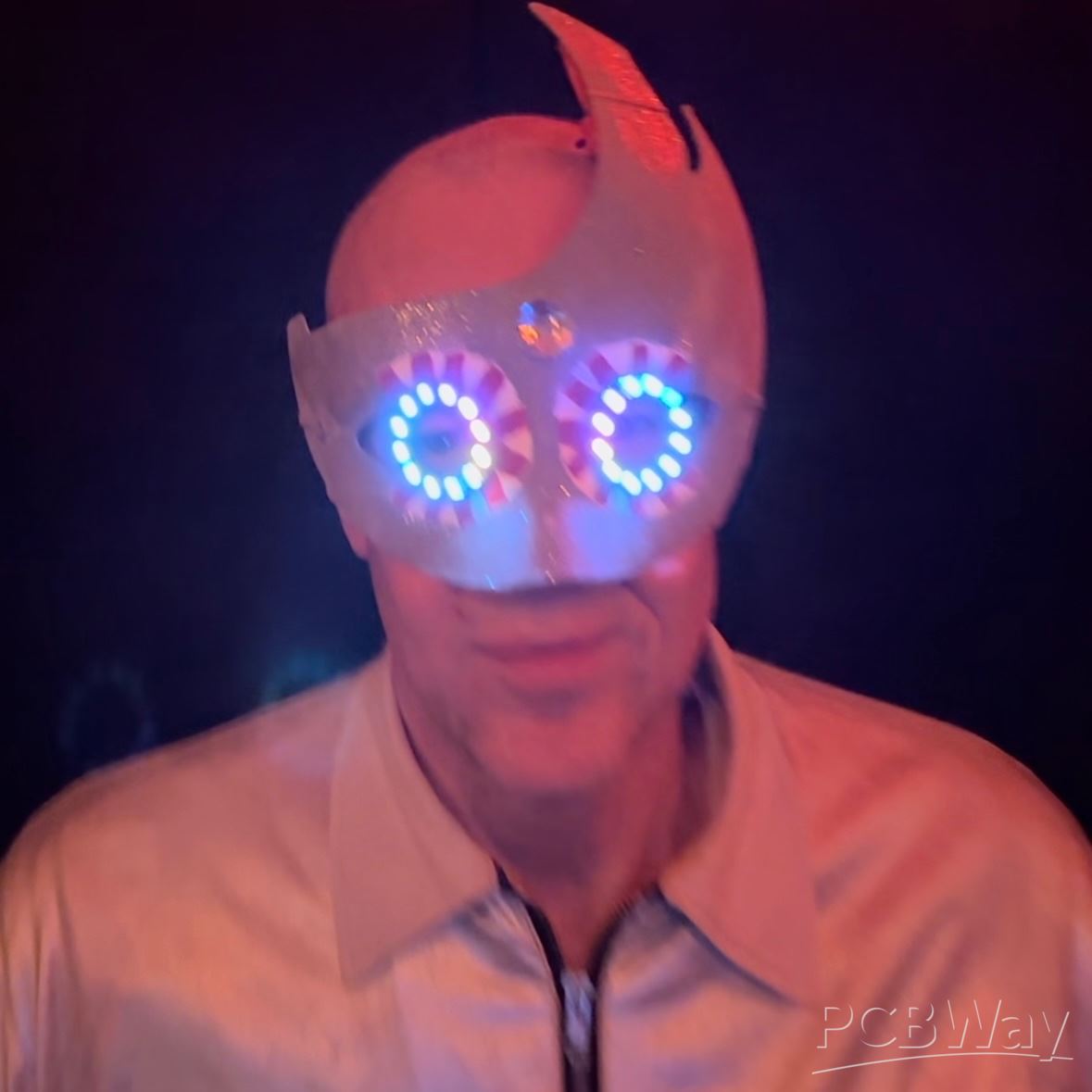
|
Autodesk Fusion 360Autodesk
|
|

|
3D Printer (generic) |
|

|
Ultimaker CURA |
Interplanetary Rover Scientific Project with Robotic Arm, Self-Driving, and Onboard Sensors for Terrain Sample Analysis
Not just a Rover.
Project Update 👨🏼🚀🚀🎉:
The rover will take part in the Analog Astronaut Mission that Space Pioneers is planning for Autumn 2024. This opportunity is great and truly unique as there are only a handful of habitats in the world and this brings me a step closer to fulfilling my lifelong dream to become an astronaut.
more info below.

Welcome to the cutting-edge world of the "Interplanetary Rover Scientific Project", formerly known as CRP. This groundbreaking initiative is not just a 1/4 scaled-down version of NASA's Perseverance rover but a technological marvel in its own right, meticulously crafted for exploration, education, and innovation.
"The goal is to make this remarkable project accessible to schools and institutions worldwide, shaping the engineers, scientists, and bright minds of the future. The CRP represents a commitment to education, innovation, and the belief that transformative learning experiences can be the catalyst for a future generation of pioneers and thinkers."
- more on the story of the project at the end of the article.
In the following paragraphs, we delve into the realms of STEM, robotics, and space exploration with this awe-inspiring rover.
Features:
Robotic Arm with Multi-Tool Capability:
Behold the marvel of a 6-axis robotic arm, equipped with a diverse set of tools – from precision pinchers to soil-drilling trivellas, and even a vacuum pump. The automatic tool head change further amplifies its versatility, ensuring adaptability for a multitude of tasks on various planetary surfaces.

Terrain Sample Analyzer:
The rover is armed with an advanced sample analysis system capable of evaluating pH levels, chemical composition, signs of biological life, emitted gases, temperature, and humidity. It's not just a rover; it's a laboratory on wheels, exploring the unknown and unlocking the secrets of "extraterrestrial landscapes".
Ackermann Steering Geometry for Autonomous Navigation:
Experience seamless autonomous navigation with a state-of-the-art Ackermann steering geometry-based guidance system. This ensures precision in movement, avoiding obstacles with finesse as the rover roams unexplored terrains.

FPV Camera for Real-time Exploration:
Witness the extraterrestrial landscapes up close with a First Person View (FPV) camera mounted on the rover's head. Immerse yourself in the excitement of uncharted territories from the comfort of your control station.

Global Data Communication and Internet Access:
Break the barriers of distance as our rover facilitates high-bandwidth data communication and internet access. Explore, analyze, and control the rover from anywhere in the world, transcending the limitations of conventional exploration.
GPS-guided Autonomous Driving with Obstacle Sensors:
Navigate with confidence using GPS-guided autonomous driving, complemented by obstacle sensors that ensure a safe journey through unknown landscapes. The rover is not just exploring; it's pioneering a new era of intelligent mobility.
Integration with Drone and All-Terrain Robot:
Elevate your exploration capabilities with provisions for housing an FPV drone and an all-terrain robot equipped with a release winch. Extend the reach of your mission, reaching new heights and depths with this symbiotic collaboration.

Separate Radio Controller for Enhanced Control:
Experience precision control with a dedicated radio controller, seamlessly connected to the rover. This provides a tactile and immersive interface for those who crave hands-on exploration.

Educational Outreach and Collaboration:
This isn't just a rover; it's a tool for tomorrow's scientists and engineers. Currently utilized in Italian schools, this educational marvel is on the verge of international integration, shaping the minds of future STEM enthusiasts. Teachers, reach out if you want to introduce this state-of-the-art teaching tool to your classroom. Here is my email: christian.ferracane@mail.polimi.it
Embark on this interplanetary journey with us, where science fiction becomes science reality. The "Interplanetary Rover Scientific Project" is more than a project; it's a testament to the limitless potential of human ingenuity in the vast cosmos.
Brief History of the project:
Originating from the esteemed Liceo Classico Carducci, the rover draws its name from its roots in this prestigious institution. As a former student of Liceo Classico Carducci, I spearheaded the creation of the first Italian high school rocketry team, Hephaestus, culminating in the successful development of a thrust vector control (TVC) rocket.
After the rocketry endeavor, we embarked on a new journey centered around robotics, giving birth to the Carducci Rover Project (CRP). The genesis of this rover traces back to those pivotal high school days when, fueled by a passion for exploration and learning, we transitioned from rocketry to the world of robotics. Leveraging various open-source online resources, we acquired the necessary knowledge and collaborated to design a learning platform that is not only educational but also captivating and enjoyable.
Following years of development, I graduated and pursued a path in aerospace engineering. Now, as a current aerospace engineering student, I've circled back to breathe new life into the CRP. The goal is to make this remarkable project accessible to schools and institutions worldwide, shaping the engineers, scientists, and bright minds of the future. The CRP represents a commitment to education, innovation, and the belief that transformative learning experiences can be the catalyst for a future generation of pioneers and thinkers.

Analog Astronaut Mission
Project Update 🚀: As I said before, the rover is gearing up for a crucial Analog Astronaut Mission with Space Pioneers in Autumn 2024, marking a substantial step toward my goal of becoming an astronaut. The mission involves a meticulous simulation of an extraterrestrial habitat, allowing us to test the rover under conditions that mirror the challenges faced by astronauts on distant planets.
This mission is more than just a human readiness exercise; it's a practical validation for the rover's design and capabilities. By navigating through simulated Martian or lunar landscapes, the rover will undergo rigorous scrutiny by a panel of engineers. This testing not only assesses its performance but also provides an invaluable learning experience for students involved in modifying and enhancing the rover. It's a pragmatic approach, leveraging empirical testing to inform iterative improvements.

Disclaimer:
As I said this project started years ago, and it is the product of months of work, study, and documentation. It is the result of many hours of reverse engineering, straight-up design, and other engineering processes. There is a chance that some of the parts might deserve credit that I got lost over the years. For tips and feedback regarding crediting please contact me as soon as possible, so that I can add them here.
Disclaimer 2:
The money this project could bring thanks to this competition will be used to make the education kit possible and therefore spread the platform to many more schools that could benefit from it. The whole project was born to be modded and I can't wait to see what the brilliant minds of STEM and Engineering students will come up with in terms of spinoffs, updates, and mods.
Credits:
Huge thanks to all the contributors who helped this project become reality. As I said I lost most of them as time passed, but please text me to remind me in case you think you may have contributed to this amazing achievement.
Thanks to Jakob Krantz for designing such an amazing remote that we could use to control the rover for all the non autonomous activities.
Interplanetary Rover Scientific Project with Robotic Arm, Self-Driving, and Onboard Sensors for Terrain Sample Analysis
*PCBWay community is a sharing platform. We are not responsible for any design issues and parameter issues (board thickness, surface finish, etc.) you choose.
- Comments(24)
- Likes(26)
-
 Engineer
Nov 23,2025
Engineer
Nov 23,2025
-
 Engineer
Oct 01,2024
Engineer
Oct 01,2024
-
 Josue Fernandez
Sep 25,2024
Josue Fernandez
Sep 25,2024
-
 池昊 PCBWAY品牌部
Aug 09,2024
池昊 PCBWAY品牌部
Aug 09,2024
-
 Engineer
Jul 19,2024
Engineer
Jul 19,2024
-
 Zarab Dhulla
Apr 08,2024
Zarab Dhulla
Apr 08,2024
-
 Engineer
Feb 16,2024
Engineer
Feb 16,2024
-
 LUIS EMILIO LOPEZ
Feb 12,2024
LUIS EMILIO LOPEZ
Feb 12,2024
-
 Giulia Fuzio
Feb 08,2024
Giulia Fuzio
Feb 08,2024
-
 Engineer
Jan 30,2024
Engineer
Jan 30,2024
-
 Jules Barnaba
Jan 30,2024
Jules Barnaba
Jan 30,2024
-
 thanos
Jan 30,2024
thanos
Jan 30,2024
-
 hawking
Jan 30,2024
hawking
Jan 30,2024
-
 Engineer
Jan 29,2024
Engineer
Jan 29,2024
-
 Whatever
Jan 29,2024
Whatever
Jan 29,2024
-
 Lorenza Gemma
Jan 27,2024
Lorenza Gemma
Jan 27,2024
-
 Engineer
Jan 27,2024
Engineer
Jan 27,2024
-
 ambra
Jan 27,2024
ambra
Jan 27,2024
-
 Engineer
Jan 25,2024
Engineer
Jan 25,2024
-
 Engineer
Jan 20,2024
Engineer
Jan 20,2024
-
 Bikesh
Jan 20,2024
Bikesh
Jan 20,2024
-
 Rambalz
Jan 19,2024
Rambalz
Jan 19,2024
-
 Ira A
Jan 17,2024
Ira A
Jan 17,2024
-
 leo volpe
Jan 16,2024
leo volpe
Jan 16,2024
-
 Christian Ferracane
Jan 15,2024
Christian Ferracane
Jan 15,2024
-
 R6 P2
Jan 15,2024
R6 P2
Jan 15,2024
- 13 USER VOTES
- YOUR VOTE 0.00 0.00
- 1
- 2
- 3
- 4
- 5
- 6
- 7
- 8
- 9
- 10
- 1
- 2
- 3
- 4
- 5
- 6
- 7
- 8
- 9
- 10
- 1
- 2
- 3
- 4
- 5
- 6
- 7
- 8
- 9
- 10
- 1
- 2
- 3
- 4
- 5
- 6
- 7
- 8
- 9
- 10

-
9design
-
7usability
-
9creativity
-
6content

-
8design
-
7usability
-
9creativity
-
6content
-
10design
-
10usability
-
10creativity
-
10content
-
10design
-
10usability
-
10creativity
-
10content
-
10design
-
10usability
-
10creativity
-
10content
-
10design
-
10usability
-
10creativity
-
10content
-
10design
-
10usability
-
10creativity
-
10content
-
10design
-
10usability
-
10creativity
-
10content
-
10design
-
10usability
-
10creativity
-
10content
-
10design
-
10usability
-
10creativity
-
10content
-
10design
-
10usability
-
10creativity
-
10content

-
10design
-
10usability
-
10creativity
-
10content

-
10design
-
10usability
-
10creativity
-
10content
 More by Christian Ferracane
More by Christian Ferracane
-
 Athena's Thrust Vectoring Control system for Advanced Model Rocketry.
A flight tested Model Rocket TVC Our thrust vectoring control (TVC) system for model rockets is desi...
Athena's Thrust Vectoring Control system for Advanced Model Rocketry.
A flight tested Model Rocket TVC Our thrust vectoring control (TVC) system for model rockets is desi...
-
 Cassiopeia Rocket Smart Launchpad
CASSIOPEIAThe ultimate (2021 at list) model rocket launchpad 3 min. readingCassiopeia is the launchp...
Cassiopeia Rocket Smart Launchpad
CASSIOPEIAThe ultimate (2021 at list) model rocket launchpad 3 min. readingCassiopeia is the launchp...
-
 PA28-X: an Overengineered RC replica of a classic that shaped an era.
Introducing the PA28-X, an extraordinary evolution in the realm of aviation enthusiasts. This 3D-pri...
PA28-X: an Overengineered RC replica of a classic that shaped an era.
Introducing the PA28-X, an extraordinary evolution in the realm of aviation enthusiasts. This 3D-pri...
-
 Interplanetary Rover Scientific Project with Robotic Arm, Self-Driving, and Onboard Sensors for Terrain Sample Analysis
Not just a Rover. Project Update : The rover will take part in the Analog Astronaut Mission that Spa...
Interplanetary Rover Scientific Project with Robotic Arm, Self-Driving, and Onboard Sensors for Terrain Sample Analysis
Not just a Rover. Project Update : The rover will take part in the Analog Astronaut Mission that Spa...
-
 auto door close device
Keep your privacy protected with our innovative IoT door closure system. Using advanced sensors, our...
auto door close device
Keep your privacy protected with our innovative IoT door closure system. Using advanced sensors, our...
-
 Andromeda Rocket Flight Controller - avionics
Andromeda is an avionics computer for thrust vectoring control rockets.The teensy it mounts is able ...
Andromeda Rocket Flight Controller - avionics
Andromeda is an avionics computer for thrust vectoring control rockets.The teensy it mounts is able ...
-
-
mammoth-3D SLM Voron Toolhead – Manual Drill & Tap Edition
88 0 0 -
-
AEL-2011 Power Supply Module
602 0 2 -
AEL-2011 50W Power Amplifier
542 0 2 -
-
-
Custom Mechanical Keyboard
746 0 0 -
Tester for Touch Screen Digitizer without using microcontroller
371 2 2 -
Audio reactive glow LED wristband/bracelet with NFC / RFID-Tags
346 0 1 -
-






















